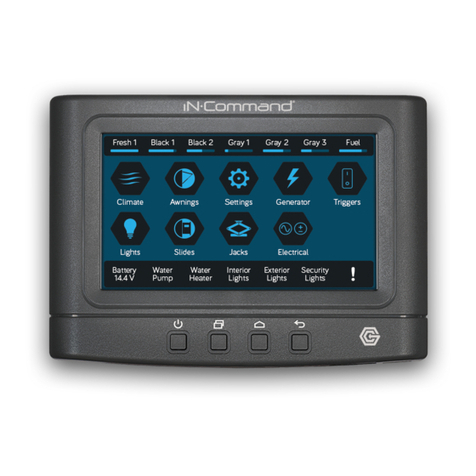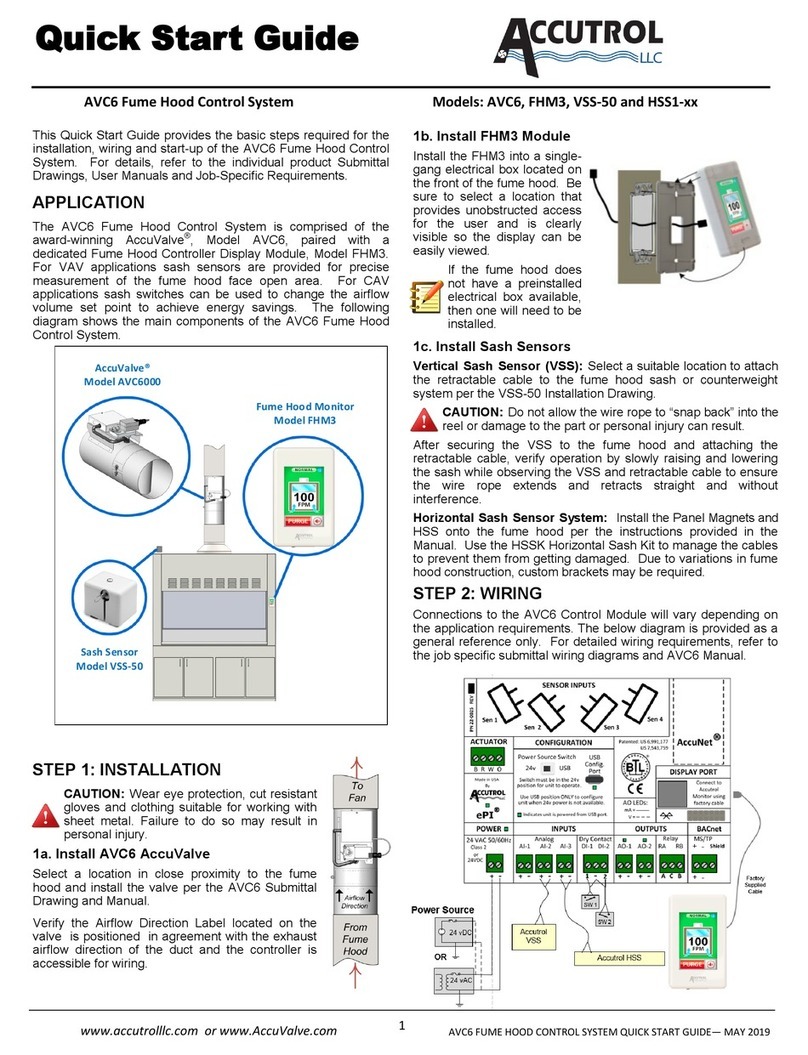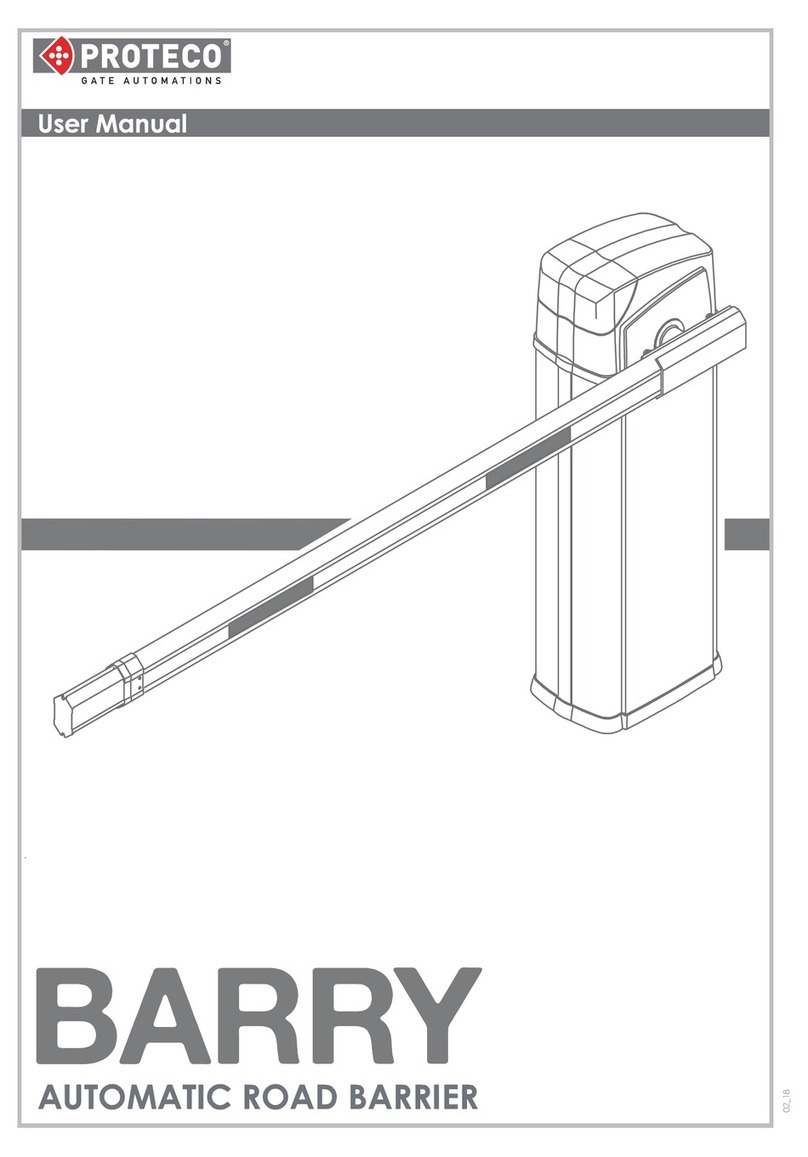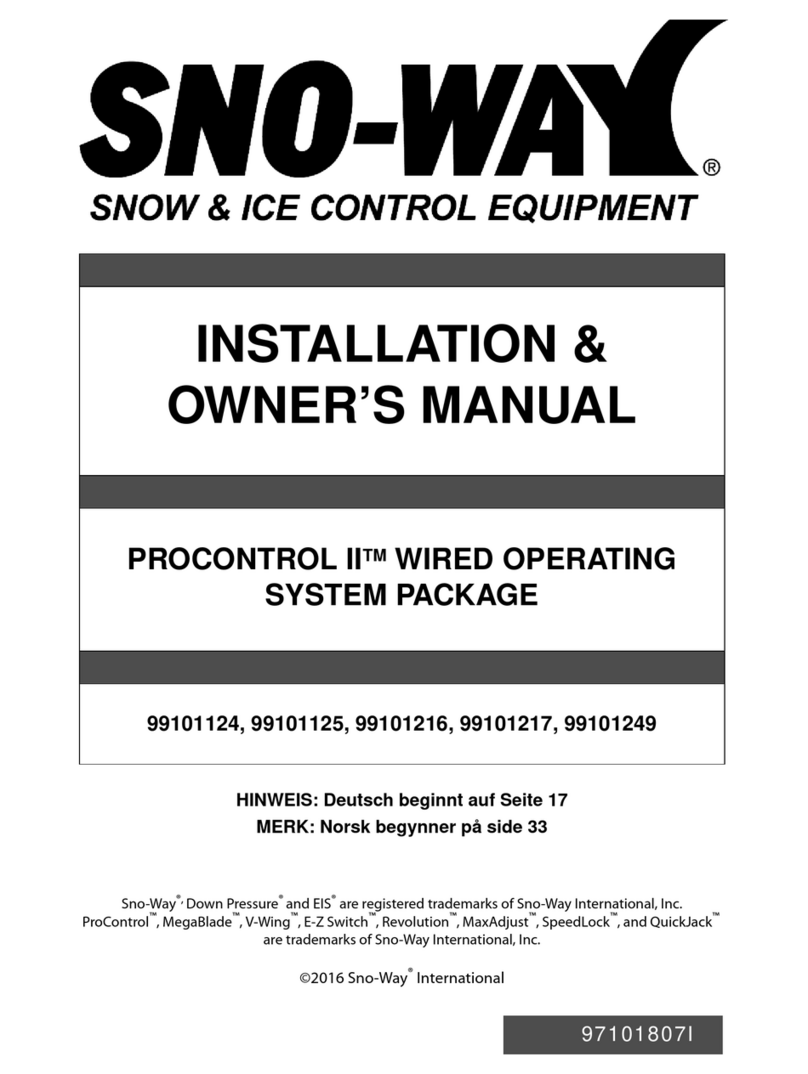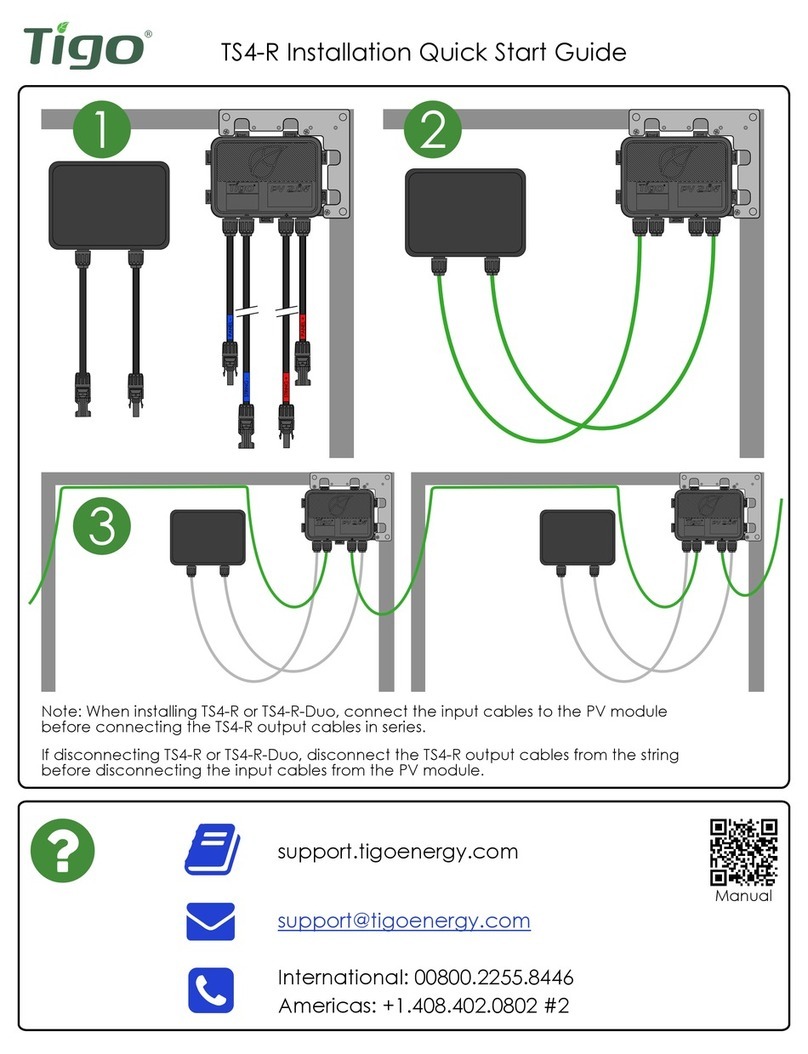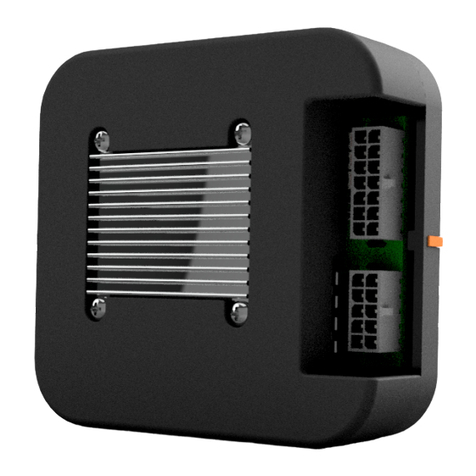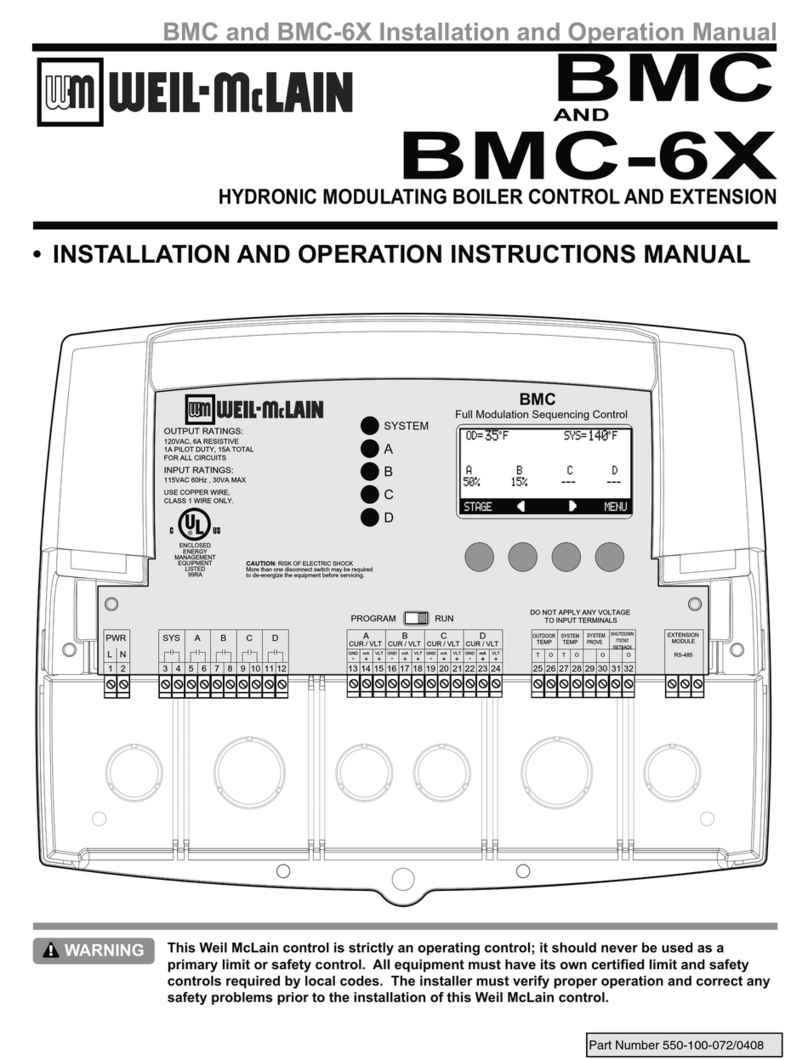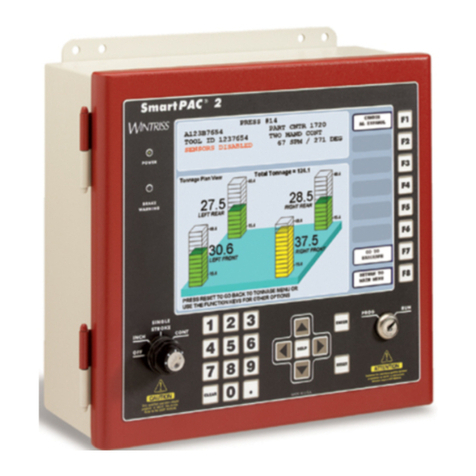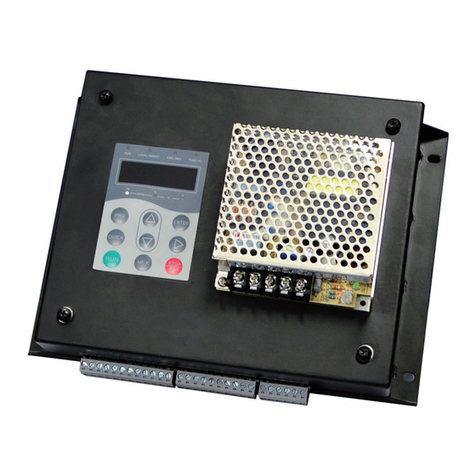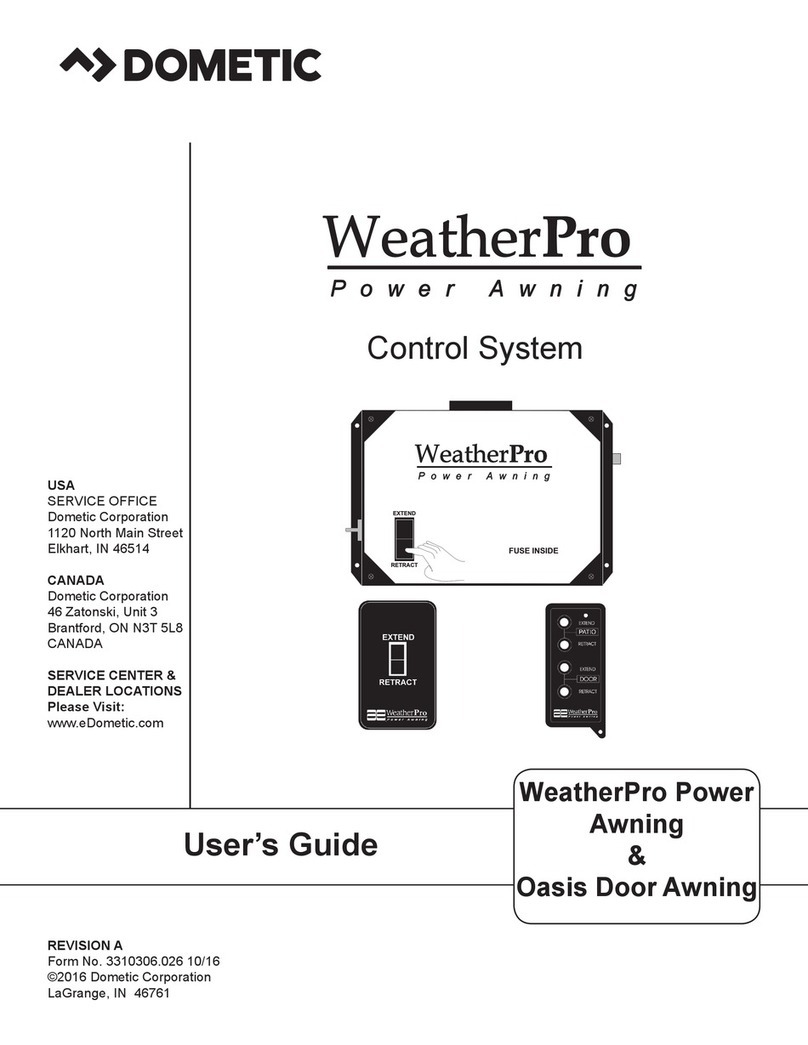GESTRA Spector Compact Series User manual

1
EN
English
Original Installation Instructions
810366-05
Compact System
NRGS 11-2
NRGS 16-2

2
Contents
Usage for the intended purpose ..............................................................................................................4
Safety note .............................................................................................................................................4
LV (Low Voltage) Directive and EMC (Electromagnetic Compatibility) .......................................................4
ATEX (Atmosphère Explosible).................................................................................................................4
Note on the Declaration of Conformity / Declaration by the Manufacturer ..........................................4
Important Notes
Page
Explanatory Notes
Scope of supply......................................................................................................................................5
Function .................................................................................................................................................5
NRGS 11-2, NRGS 16-2 ........................................................................................................................13
Table “Functions” .................................................................................................................................13
Tools.....................................................................................................................................................14
Examples of installation ........................................................................................................................15
Key.......................................................................................................................................................16
Installation
NRGS 11-2, NRGS 16-2 .................................................................................................................... 6 - 7
Name plate / marking .............................................................................................................................8
Dimensions.............................................................................................................................................9
Technical data
NRGS 11-2, NRGS 16-2 ........................................................................................................................10
Key.......................................................................................................................................................12
Design
NRGS 11-2, NRGS 16-2 ........................................................................................................................11
Key.......................................................................................................................................................12
Functional Elements

3
Electrical Connection
NRGS 11-2, NRGS 16-2 ........................................................................................................................17
Wiring diagram ....................................................................................................................................17
Tools.....................................................................................................................................................18
Contents - continued -
Page
Checking electrical connection .............................................................................................................20
Switching on mains voltage ..................................................................................................................20
Checking assignation of switching functions.........................................................................................20
Checking low level (MIN) alarm.............................................................................................................20
Commissioning Procedure
Resetting low level (MIN) alarm.............................................................................................................20
Operation
Fault finding list for troubleshooting......................................................................................................21
Operational malfunctions
Factory setting......................................................................................................................................19
Switch selection of response sensitivity ................................................................................................19
Tools.....................................................................................................................................................19
Sensitivity of response
Exchanging the electronic insert ...........................................................................................................22
Removing and disposing of the compact system...................................................................................22
Exchanging the electronic insert, removing the compact system

4
Important Notes
Danger
When loosening the compact system steam or hot water might escape!
This presents the risk of severe scalding all over the body!
It is therefore essential not to dismantle the equipment unless the boiler pressure is veri-
fied to be 0 bar.
The equipment becomes hot during operation.
Risk of severe burns to hands and arms.
Before carrying out installation and maintenance work make sure that the equipment is
cold.
The terminal strip of the NRGS 11-2, NRGS 16-2 is live during operation.
This presents the danger of electric shock!
Cut off power supply before mounting or removing the housing cover!
Safety note
The equipment must only be installed and commissioned by qualified and competent staff.
Retrofitting and maintenance work must only be performed by qualified staff who - through adequate
training - have achieved a recognised level of competence.
Attention
The name plate specifies the technical features of the equipment. Do not commission or
operate any item of equipment that does not bear its specific name plate.
Usage for the intended purpose
Use the compact system NRGS 11-2, NRGT 16-2 as water level controller / limiter in, e. g, steam boilers
and (pressurised) hot water installations as well as in condensate and feedwater tanks.
ATEX (Atmosphère Explosible)
According to the European Directive 2014/34/EU the equipment must not be used in potentially explo-
sive areas.
Safety note
Note on the Declaration of Conformity / Declaration by the Manufacturer
For details on the conformity of our equipment according to the European Directives see our Declaration
of Conformity or our Declaration of Manufacturer.
The current Declaration of Conformity / Declaration of Manufacturer are available in the Internet under
www.gestra./de/documents or can be requested from us.
LV (Low Voltage) Directive and EMC (Electromagnetic Compatibility)
The equipment meets the requirements of the Low Voltage Directive 2014/35/EU and the EMC Directive
2014/30/EU.

5
Function
The NRGS 11-2, NRGS 16-2 is a compact-type system consisting of a level electrode with four tips and
an integrated level switching controller. For the correct functioning of the equipment the water must
have a minimum conductivity of >0.5 µS/cm at 25 °C.
The length of the individual electrode tips determines the switchpoints for the respective water levels.
The equipment monitors the water level by sensing whether the electrode tips are exposed or im-
mersed and - by energizing or de-energizing the controller output contact - switches the feedwater
pump on or off. The LED for pump is illuminated when the equipment switches the feedwater pump on.
When the water level falls below the low level, the two MIN electrode tips are exposed and after the
de-energizing delay the equipment switches the MIN output contacts. The safety circuit for the heating
will be opened after the de-energizing delay and the two MIN LED are illuminated.
A MIN alarm can be simulated by pressing the test button.
The heating will be switched off and interlocked. To reset the interlock the MIN electrode tips must
enter the water again and the button “Reset” must be pushed.
Explanatory Notes
Scope of supply
NRGS 11-2
1 Compact system NRGS 11-2
1 Joint ring D 33 x 39 DIN 7603-1.4301,
bright annealed
1 Installation manual
NRGS 16-2
1 Compact system NRGS 16-2
1 Joint ring D 33 x 39 DIN 7603-1.4301,
bright annealed
1 Installation manual
NRGS 11-2, NRGS 16-2
Technical data
Type approval no.
TÜV · WR/WB · xx-392
Service pressure
NRGS 11-2: 6 bar at 159 °C, NRGS 16-2: 32 barg at 238 °C
Mechanical connection
Screwed G 1, EN ISO 228-1
Materials
Terminal box 3.2161 G AlSi8Cu3
Sheath 1.4301 X5 CrNi18-10
Screw-in body 1.4571 X6 CrNiMoTi17-12-2
Electrode tips 1.4571 X6 CrNiMoTi17-12-2
Insulation
PTFE
Spacer disc PTFE
Electrode tips
Lengths available: 500, 1000, 1500 mm

6
Supply voltage
230 V +/– 10%, 50/60 Hz
115 V +/– 10%, 50/60 Hz
24 V +/– 10%, 50/60 Hz (optional)
Power consumption
5 VA
Fuse
external 63 mA , slow-blow, at 230 V and 115 V,
external 150 mA slow-blow at 24 V.
internal thermal fuse Tmax = 102 °C
Response sensitivity (electrical conductivity of water at 25 °C)
>0.5 ...< 1000 µS/cm or >10 ...< 10 000 µS/cm (switch-selectable)
Electrode voltage
10 Vss
Output
2 volt-free relay contacts, 8 A 250 V AC / 30 V DC cos f= 1
De-energizing delay: 3 sec. (MIN alarm)
1 volt-free relay contact, 8 A 250 V AC / 30 V DC cos ϕ= 1
(e. g. feedwater pump ON).
Provide inductive loads with RC combinations according to manufacturer’s specification to ensure
interference suppression.
Indicators and adjustors
2 red LEDs for signalling “Low water level”, 1 green LED for “Pump ON”.
1 four-pole code switch for selecting the response sensitivity.
1 push button for testing the MIN (low-level) alarm.
1 Push button “Reset”
Cable entry
Cable gland with integral cable clamp
M 16 (PG 9), M 20 (PG 16)
Protection
IP 65 to DIN EN 60529
Weight
Approx. 0.8 kg
Ambient temperature
when system is switched on: 0 ° ... 70 °C, during operation: -10 ... 70 °C
Transport temperature
–20 ... +80 °C (<100 hours), defrosting time of the de-energized equipment before it can be put into
operation: 24 hours.
Storage temperature
–20 ... +70 °C, defrosting time of the de-energized equipment before it can be put into operation:
24 hours.
Relative humidity
max. 95 %, no moisture condensation
NRGS 11-2, NRGS 16-2 - continued -
Technical Data - continued -

7
Technical Data - continued -
Name plate / marking
Fig. 1
Disposal note
Type approval no.
Safety note
Equipment designation
Type of threaded end,
material number
Pressure rating
Supply voltage
Max. ambient temperature
Protection
Electrical specification
Response sensitivity
XX
CE Marking
Operating note
Manufacturer

8
Dimensions
Technical Data - continued -
Fig. 2
≤42
b = 70
Fig. 3
N8
N10
0.5
∅ 40
1" , DIN 228
7
9
8
0
50
65-70
≤ 14
173
140
337.5
500, 1000, 1500

9
Functional Elements
NRGS 11-2, NRGS 16-2
Fig. 5
Fig. 4
a b c
1234
d
ji
f
h
g
6
5
e
k
65

10
1 LED “MIN alarm”
2 LED “MAX alarm”
3LED “Pump ON”
4Code switch for “Response sensititiy”
5Push button “TEST”
6Push button “RESET”
7Thermal insulation, provided on site, ∅= 20 mm (outside of thermal insulation of steam boiler)
8Seating surface
9Joint ring D 33 x 39 DIN ISO 7603-1.4301, bright annealed
0Screw-in thread G1, EN ISO 228-1
aHousing screws M4
bCable gland PG 9 /PG 11
cHousing cover
dFixing screws for cover plate
eSeparating segment
fTerminal strip
gPE connection
hTerminal strip for testing
iThermal fuse Tmax 102 °C
jHexagon nut
kCover plate
Dimensions / Functional Elements - continued -
Key

11
Installation
NRGS 11-2, NRGS 16-2
1. Determine required measuring lengths of electrode tips and enter data in table “Functions”. Fig. 3
2. Cut electrode tips 1 ,2 , 3 and 4 accordingly.
The electrode tips 1 2 (low level limiter) must have the same length.
3. Deburr faces of electrode tips.
4. Strip off 50 mm of PTFE insulation from the ends of the electrode tips.
5. Check seating surfaces of threads or flange provided on vessel or boiler standpipe. Fig. 3.
Place supplied joint ring 9onto seating surface of the threaded standpipe or flange. Fig. 3
6. Use only the joint ring (D 33 x39 DIN 7603-1.4301, bright annealed) supplied with the electrode.
7. Apply a light smear of silicone grease to the electrode thread 0(e. g. DOW Corning 111 Compound).
8. Screw compact system into threads or flange provided on vessel and tighten with a 41 mm
open-end spanner. The torque required for tightening when cold is 140 Nm.
Table “Functions”
Please enter data.
Function Function Electrode tip Length [mm]
Low level alarm 1
Low level alarm 2
e. g. pump ON 3
e. g. pump OFF 4
Attention
nDo not subject the electrode tips to shocks and do not bend the electrode tips when
mounting. Use only the supplied joint ring D 33 x 39, form D, DIN 7603, made from
1.4301 (bright annealed).
nDo not insulate screw-in thread with hemp or PTFE tape.
nDo not lag electrode body above the hexagonal section.
nInstall compact system only in a vertical position!
nThe specified torques must be strictly observed.
Note
nFor the approval of the boiler standpipe the relevant regulations must be considered.
nCarry out the installation work in compliance with the installation examples given in
this installation manual.
Tools
nOpen-end spanner A. F. 41 mm nHacksaw
nBolt cutter nFlat file, cut 2

12
Installation - continued -
20
≥10
DN 50
1"
∅20
∅ 20
≤ 90°
Fig. 6 Fig. 7
20
∅
20
≥ 10
DN 50
1"
≤ 90°
∅ 20
≤1500
DN 20
DN 20
Centre distance
≤ 20
1"
DN 20
Fig. 9
≤20
DN 100
24.5 24.5
20
∅20
G ¾
Fig. 8
∅ 20
≤ 90°
≤3000
1"
≥14
Examples of installation
o
l
m
n
o
l
m
n
p
o
u
m
l
s
u
r
m
t
w
n
p
o
s
p
q
u
v
p
q
u
v
l

13
Key
lFlange PN 40, DN 50, DIN 2527
Flange PN 40, DN 100, DIN 2527
mFor the approval of the boiler standpipe with connecting flange the relevant regulations must
be considered.
nVent hole
oHigh water HW
pElectrode tip ∅= 5 mm
qProtection tube DN 80
rProtection tube DN 100
sElectrode distance ≥ 14 mm
tElectrode distance ≥ 40 mm
uLow water LW
vReducer DIN 2616, part 2 K-K88. 9 x 3.2-242.4 x 2.6 W
wReducer DIN 2616, part 2 K-K114. 3 x 3. 6-648.3 x 2.9 W
Installation - continued -

14
Electrical Connection
For mains and control cables you can use multi-core flexible control cable (conductor size
0.75 - 1.5 mm²) .
1. Unscrew housing screws a, remove housing cover c. Fig. 5
2. Unscrew union nuts of cable entries b.
The terminal box can be turned through +/– 180 °.
3. Loosen hexagon nut j with 17 mm open-end spanner but do not remove! Fig. 6
4. Turn electrode terminal box into desired direction (+/– 180°).
5. Tighten hexagon nut jslightly.
6. Remove terminal strips ffrom circuit board.
7. Connect terminal strip according to wiring diagram, establish PE connection g.
8. Plug in terminal strips f.
9. Install cable entry b.
10. Put housing cover cin place, insert and fasten housing screws a.
NRGS 11-2, NRGS 16-2
Fig. 10
Wiring diagram
S1 Disconnector
F1 Fuse

15
nThe following relocations of cables with basic insulation are not permissible:
Mains and control cables in low voltage areas.
nTo prevent the welding together of contacts provide an external slow-blow fuse
T 2.5 A for the output contacts.
nProvide inductive loads with RC combinations according to manufacturer’s specifica-
tion to ensure interference suppression.
nProvide an external slow-blow fuse for the compact system: 63 mA for 230 V and
115 V or 150 mA for 24 V.
nInstall an easily accessible disconnecting switch for the compact system in the close
proximity of the equipment (EN 61010-1).
nMark respective switch as disconnecting device for the compact system.
Tools
Attention
nScrewdriver for cross head screws, size 1
nScrewdriver for slotted screws, size 2.5, completely insulated according to VDE 0680
nOpen-end spanner 17 mm A. F.
Electrical Connection - continued -

16
The response sensitivity can be switch selected between ≥ 0.5 µS/cm and ≥ 10 µS/cm by means of the
code switch 4:
1. Unscrew housing screws aat the electrode terminal and remove cover c.
Fig. 5, Fig. 6
2. Undo fixing screws dand remove cover plate k.
Code switch 1–4 OFF Response sensitivity ≥ 0.5 µS/cm.
Code switch 1–4 ON Response sensitivity ≥ 10 µS/cm.
3. Put cover plate kin place and fix it with screws d.
4. Put cover in place cand fasten housing screws a.
Sensitivity of response
Factory settings
The equipment features the following factory set default value:
nResponse sensitivity ≥ 10µS/cm2
Switch selection of response sensitivity
Attention
nScrewdriver for cross head screws, size 1
nScrewdriver for slotted screws, size 2.5, completely insulated according to VDE 0680
nDo not damage the electronic components when setting the code switch!
nDo not use a graphitic pencil to set the code switch.
Tools

17
1. Apply supply voltage and check that all functions of the respective switchpoints work correctly.
LEDs 1, 2, 3 are provided for visual check of switchpoints. Fig. 5
To check the correct functioning of the LEDs 1, 2, 3remove the housing cover c. Fig. 4, Fig. 5
1. Check the switching function Low level (MIN) alarm of the electrode tips 1and 2.
For this test the level in the vessel must fall below the low level mark.
The low level alarm must then be activated by the level switch after the de-energizing delay has
elapsed.
2. Check the switching functions “Pump ON” and “Pump OFF”. See table “Functions”.
Commissioning Procedure
Danger
1. Make sure that the system NRGS 11-2, NRGS 16-2 is wired in accordance with the wiring diagram.
Fig. 11
2. Make sure that the supply voltage agrees with the specification on the name plate.
The terminal strip of the NRGS 11-2, NRGS 16-2 is live during operation.
This presents the danger of electric shock!
Cut off power supply before mounting or removing the housing cover!
Checking electrical connection
Applying mains voltage
Checking assignation of switching functions
Checking low level (MIN) alarm
The function of the low level alarm can be simulated by pushing the button “TEST” 5. Fig. 5
Press button “TEST”. After the de-energizing delay a low level alarm must be raised.
Operation
Resetting low level alarm
The heating will be switched off and interlocked. To reset the interlock the MIN electrode tips must
enter the water again and the button “Reset” 6must be pushed. Hold down the button “Reset” for at
least 5 seconds.

18
Troubleshooting
Fault finding list for troubleshooting
Switchpoint “Pump OFF” exceeded – no function
Fault: The electronic insert is defective.
Remedy: Replace the electronic insert with a new one.
Fault: The screw-in body does not have earth connection to the vessel.
Remedy: Clean sealing surfaces and insert metal joint ring as shown in the drawing.
Do not insulate compact system with hemp or PTFE tape!
Fault: The compact system is not supplied with voltage.
Remedy: Switch on supply voltage. Wire equipment according to the wiring diagram.
Fault: The thermal fuse has been triggered.
Remedy: The ambient temperature must not exceed 70 °C.
Replace thermal fuse.
Fault: The electrical conductivity is too low.
Remedy: Set code switch 4to ≥ 0.5 μS/cm.
Level below switchpoint “Low level” – no function
Fault: The vent hole in the protection tube does not exist, is obstructed or flooded.
Remedy: Check protection tube and, if necessary, provide vent hole.
Fault: The isolating valves of the external measuring pot are closed.
Remedy: Open isolating valve.
Fault: The electrode tips have earth contact.
Remedy: Check and, if necessary, change position of installation.
Switchpoint has been reached – incorrect function
Fault: The switching function has not been assigned correctly. Electrode tips have been cut to
the wrong size.
Remedy: Identify electrode supply wires and reconnect the electronic insert accordingly.
If faults occur that are not listed above or cannot be corrected, please contact our service centre or
authorized agency in your country.

19
Exchanging the electronic insert
Exchanging the electronic insert, removing the compact system
Before exchanging the electronic insert take the compact system out of service and cut off its voltage
supply.
1. Undo the housing screws aand remove the housing cover c. (Fig. 4, 5)
2. Pull the electrode wires off the terminal lugs on the electronic insert.
Remove all terminal strips apart from terminal strip h.
3. Undo the PE connection g.
4. Unscrew the fixing screws of the electronic insert and take out the electronic insert.
The electronic insert is available as spare part type NRV 1-45.
5. Install the new electronic insert in reverse order.
Danger
When loosening the equipment steam or hot water might escape!
This presents the risk of severe scalding all over the body!
It is therefore essential not to dismantle the equipment unless the boiler pressure is
verified to be 0 bar.
The equipment becomes hot during operation. Touching the hot equipment presents the
risk of severe burns to hands and arms. All installation, removal and maintenance work
must only be performed when the system is cold.
The terminal strips of the equipment are live during operation.
This presents the danger of electric shock!
Always cut off power supply to the equipment before mounting, removing or connecting
the terminal strips!
Removing and disposing of the compact system
Before removing the compact system take it out of service and cut off its voltage supply.
1. Undo the housing screws aand remove the housing cover c.(Fig. 5, 6)
2. Detach the connecting wires from the terminal strips and pull the wires out of the cable glands.
3. Undo the PE connection g.
4. Before removing the equipment make sure that is is neither hot nor under pressure.
For the disposal of the equipment observe the pertinent legal regulations concerning waste disposal.
Note
When ordering spare parts or replacement equipment please state the material number
indicated on the name plate.

20
810366-05/07-2017cm (808434-09)
·
GESTRA AG
·
Bremen
·
Printed in Germany
GESTRA AG
Münchener Straße 77
28215 Bremen
Germany
Telefon +49 421 3503-0
Telefax +49 421 3503-393
E-mail [email protected]
Web www.gestra.de
Agencies all over the world: www.gestra.de
This manual suits for next models
2
Table of contents
Popular Control System manuals by other brands
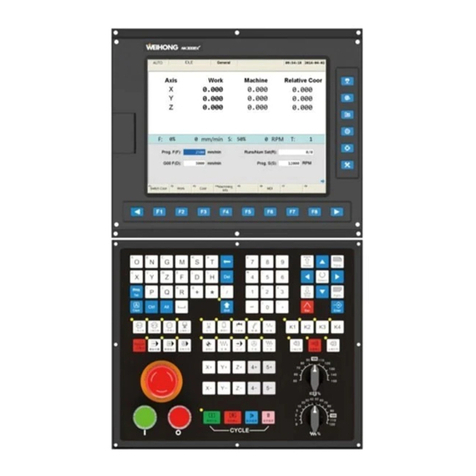
WEIHONG
WEIHONG NK300CX quick start guide
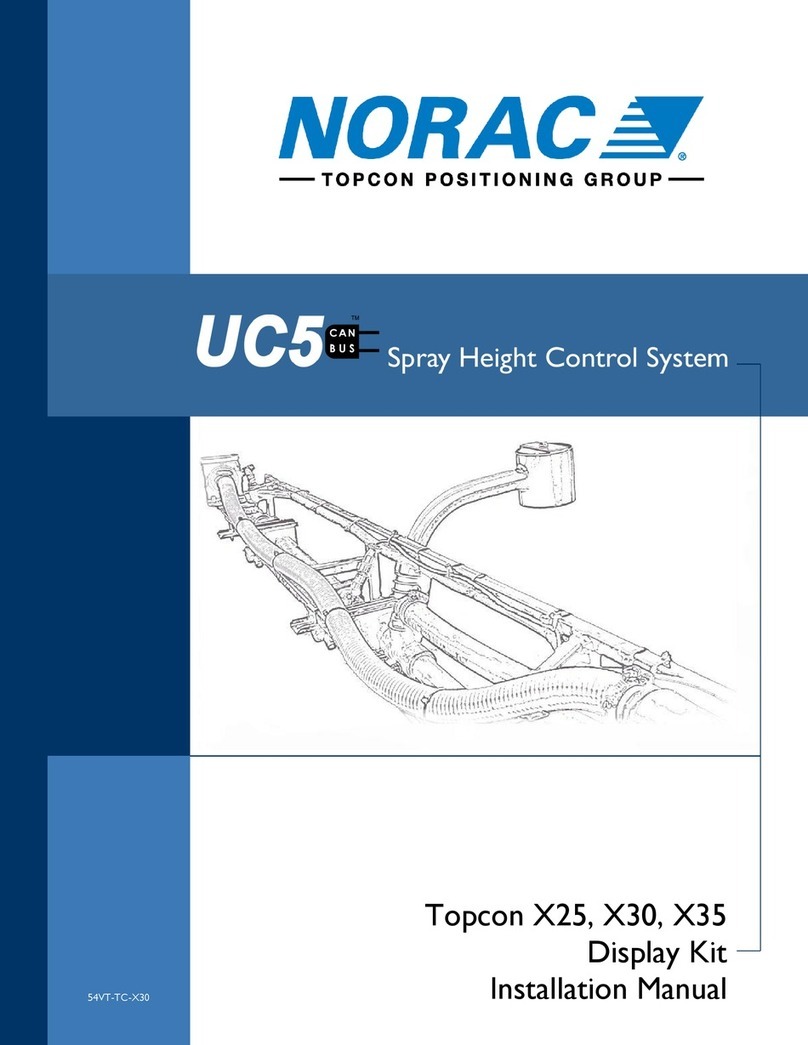
Topcon Positioning Group
Topcon Positioning Group NORAC UC5 installation manual
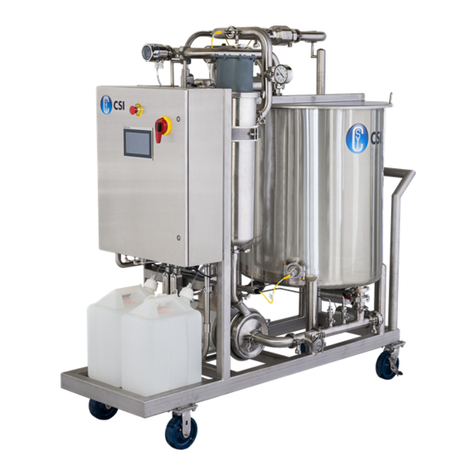
CSI
CSI COMPACT CIP Installation operation & maintenance
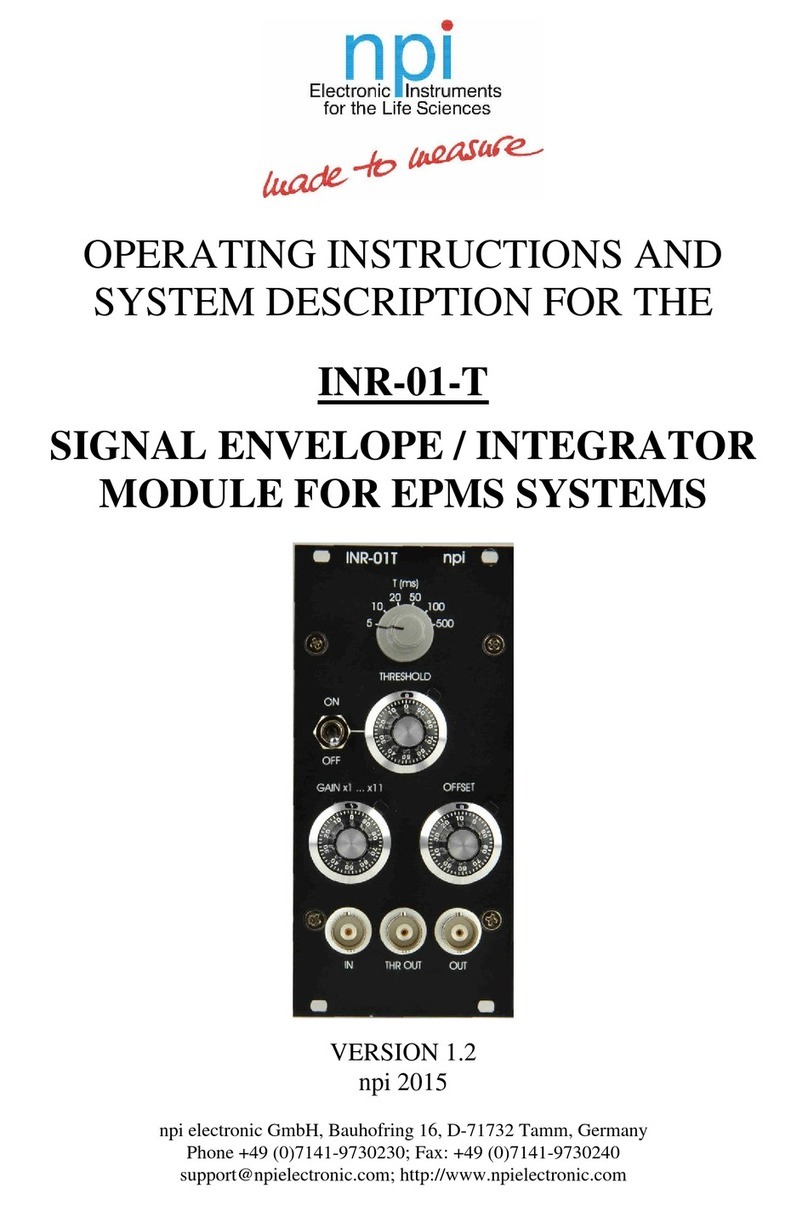
NPI
NPI INR-01-T Operating instructions and system description

Parklio
Parklio Barrier user manual
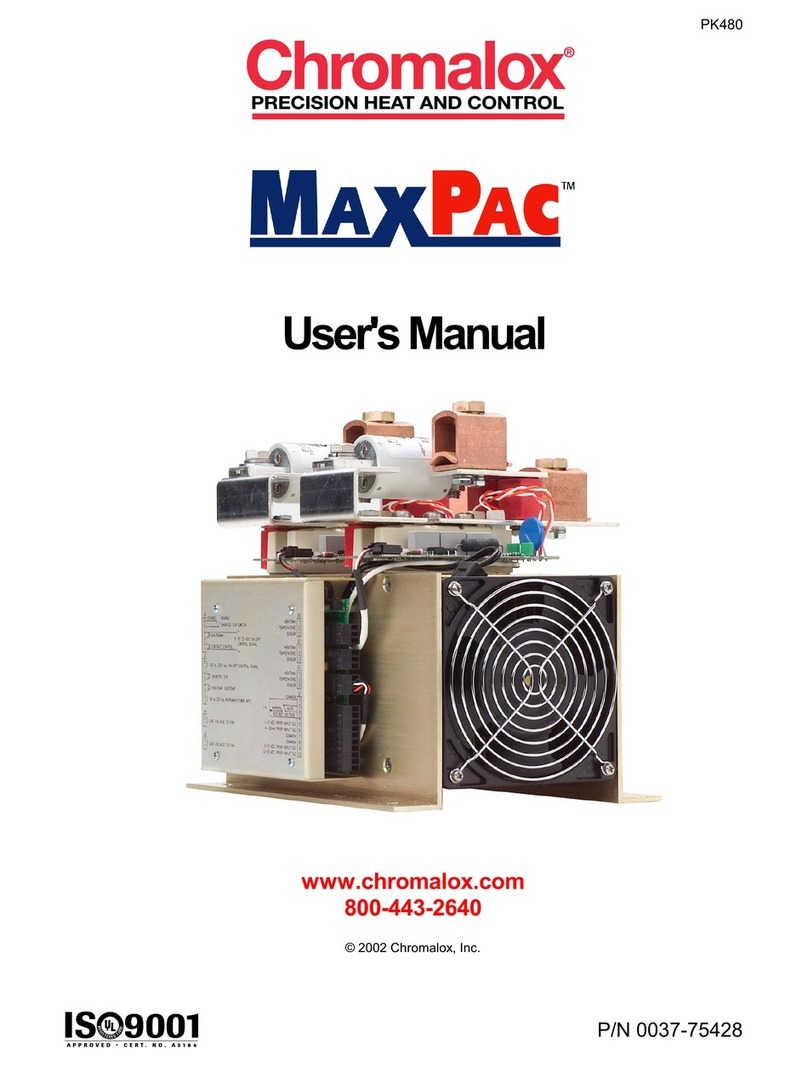
Chromalox
Chromalox MAXPAC PK480 user manual
